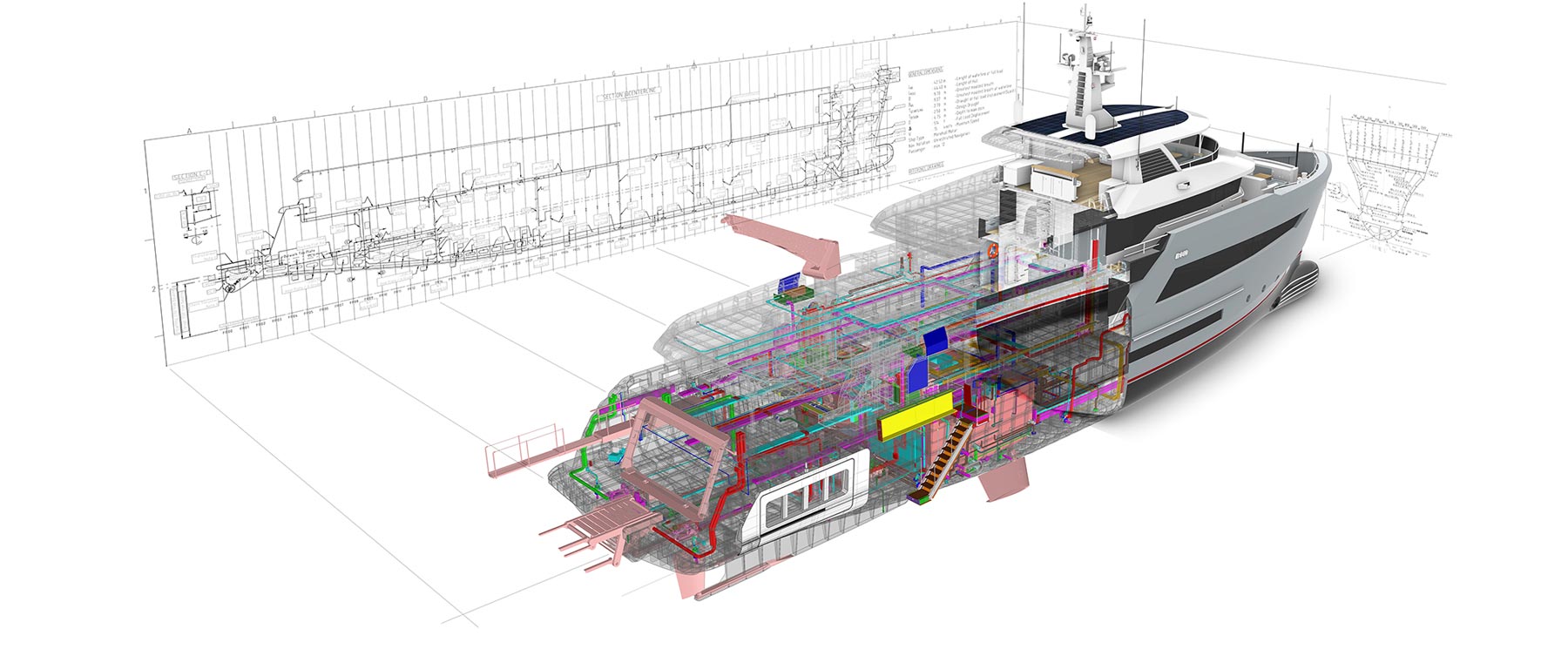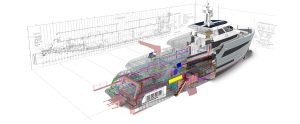Explore what naval architecture is, its role in ship design and engineering, top career paths, degrees, salaries, and how it differs from marine engineering. A complete guide for students and maritime professionals.
Who Designs the Ships That Rule the Seas?
From luxurious cruise liners to ultra-modern warships and high-tech submarines—naval architects are behind the design, safety, and efficiency of every marine vessel. In a world driven by global shipping, green technology, and advanced simulation tools, naval architecture has emerged as one of the most dynamic and rewarding engineering careers.
What Is Naval Architecture?
Naval Architecture is the engineering discipline focused on the design, construction, maintenance, and repair of ships, boats, submarines, and offshore structures. It combines elements of:
-
Mechanical engineering
-
Structural design
-
Hydrodynamics
-
Propulsion systems
-
Stability and safety analysis
What Does a Naval Architect Do?
A naval architect is responsible for:
- Designing hull forms to ensure optimal buoyancy and performance
- Calculating stability, trim, and resistance in various sea conditions
- Integrating propulsion systems, rudders, and propellers
- Conducting hydrodynamic and structural simulations
- Collaborating with marine engineers, shipyards, and regulatory bodies
“A ship is born on the desk of a naval architect long before it touches the sea.” – Anonymous
Is Naval Architecture a Good Career?
Yes, naval architecture is a rewarding career that blends creativity, science, and global relevance.
Reasons to Consider:
-
High demand in shipbuilding nations and offshore industries
-
Attractive salaries and international opportunities
-
Career diversity (defense, cruise, oil & gas, green shipping)
-
Involvement in cutting-edge projects like autonomous vessels and zero-emission ships
What Is BS Naval Architecture?
A Bachelor of Science (BS) in Naval Architecture is a 4-year undergraduate program covering:
-
Ship design principles
-
Fluid mechanics
-
Strength of materials
-
CAD and marine structure modeling
-
Marine propulsion and resistance
Graduates are eligible to work in design firms, shipyards, classification societies, and naval forces.
Difference Between Naval Architecture and Marine Engineering
| Aspect | Naval Architecture | Marine Engineering |
|---|---|---|
| Focus | Ship design, stability, and structural integrity | Operation and maintenance of ship systems |
| Workplace | Design offices, R&D centers, shipyards | Engine rooms, maintenance teams, shipping lines |
| Tools Used | CAD, CFD, FEM, 3D modeling software | Mechanical tools, monitoring systems, control panels |
| Career Titles | Naval Architect, Hull Designer, Design Engineer | Marine Engineer, 4th/3rd/2nd/Chief Engineer |
They often work together, ensuring ships are both well-designed and operationally efficient.
Related Career Paths
-
Ship Design Engineer
-
Offshore Structure Specialist
-
Marine Safety Analyst
-
Hydrodynamic Researcher
-
Defense Naval Engineer
-
Green Ship Technology Consultant
Naval Architecture Salary (2024 Estimates)
| Experience Level | Region | Average Salary (USD/Year) |
|---|---|---|
| Entry-Level | Asia | $25,000 – $40,000 |
| Mid-Level (3–7 yrs) | Europe | $50,000 – $70,000 |
| Senior Naval Architect | USA/Canada | $80,000 – $110,000+ |
| Offshore/Oil Industry | Middle East | $90,000 – $120,000 |
Salaries vary based on sector (commercial vs. defense), location, and qualifications.
Best Naval Architecture Universities & Degrees
Top institutions offering Naval Architecture or Marine Engineering programs:
-
MIT (USA)
-
University of Southampton (UK)
-
TU Delft (Netherlands)
-
University of Genoa (Italy)
-
Webb Institute (USA)
-
Indian Maritime University (India)
-
Shanghai Jiao Tong University (China)
Degrees offered:
-
B.Sc. / B.Eng. in Naval Architecture
-
M.Sc. / M.Eng. in Ship Design or Offshore Engineering
-
Ph.D. in Hydrodynamics or Structural Marine Design
Latest Trends & Future Outlook
1. Sustainable Ship Design
- IMO and EU mandates on carbon emissions drive eco-friendly design.
- Zero-emission vessels and alternative fuels like LNG and hydrogen.
2. Autonomous and Smart Ships
-
Integration of AI, sensors, and predictive analytics in ship design.
3. CFD & FEM Simulation Tools
-
Use of Computational Fluid Dynamics and Finite Element Modeling in early-stage design.
4. Offshore Renewable Projects
-
Designing floating wind turbines and subsea structures.
FAQs: Naval Architecture
Q1: Is naval architecture hard?
A1: It involves complex engineering concepts, but with interest and dedication, it’s a highly rewarding field.
Q2: What are the prerequisites for studying naval architecture?
A2: Strong background in mathematics, physics, and interest in engineering and marine technology.
Q3: Can naval architects work onshore?
A3: Yes, most naval architects work in design offices, shipyards, consultancies, or government departments.
Q4: Which software do naval architects use?
A4: Rhino, AutoCAD, Maxsurf, Orca3D, ANSYS, and SolidWorks.
People Also Ask
Q1: What does a naval architect do?
A naval architect designs, analyzes, and oversees the construction of ships and marine structures, ensuring they are safe, efficient, and seaworthy.
Q2: Is naval architecture a good career?
Yes, it offers strong job prospects, global opportunities, competitive salaries, and the chance to work on innovative maritime projects.
Q3: What is BS in Naval Architecture?
It’s a 4-year Bachelor of Science degree that teaches ship design, marine structures, stability, and propulsion systems.
Q4: What’s the difference between marine engineering and naval architecture?
Naval architects focus on ship design and structure, while marine engineers manage onboard machinery and systems.
People Also Search For
Naval Architecture Salary
Entry-level salaries range from $25,000–$40,000/year, while senior professionals can earn over $100,000 depending on region and sector.
Naval Architecture Degree
Offered as B.Sc., B.Eng., M.Sc., or Ph.D., focusing on ship design, fluid mechanics, structural analysis, and marine systems.
Naval Architecture and Marine Engineering
They are complementary fields—naval architecture covers design, and marine engineering handles operational systems.
Naval Architecture Courses
Include subjects like ship theory, hydrostatics, resistance and propulsion, and computer-aided ship design.
Naval Architecture PDF
Refers to downloadable textbooks, notes, or academic resources used in naval architecture programs.
Naval Architecture University
Top universities include MIT (USA), University of Southampton (UK), TU Delft (Netherlands), and UNIGE (Italy).
Naval Architecture Jobs
Available in shipyards, design consultancies, naval forces, offshore energy firms, and classification societies.
Naval Architecture Master’s
A postgraduate program (M.Sc. or M.Eng.) offering advanced knowledge in hydrodynamics, offshore structures, or simulation tools.
Naval Architecture Engineering
A technical field combining engineering principles with marine vehicle design and performance analysis.
Naval Architecture Books
Key texts include Principles of Naval Architecture, Ship Design and Construction, and Introduction to Naval Architecture.
Naval Architecture and Marine Engineering Salary
Salaries for both fields are comparable, often ranging from $50,000 to $110,000+ depending on role and location.
Naval Architecture and Ship Building
Naval architecture focuses on the design and technical specs, while shipbuilding covers actual construction and assembly.
Conclusion: A Career That Shapes the Future of Maritime Innovation
Naval architecture isn’t just about drawing ships—it’s about engineering innovation, environmental responsibility, and global impact. Whether you’re a student exploring maritime careers or a professional upskilling in design, this field offers endless opportunities.
Learn more about Principles of Naval Architecture, marine engineering vs. naval architecture, and top universities offering naval architecture degrees.
Further Reading & Resources
-
SNAME – Society of Naval Architects and Marine Engineers: https://www.sname.org
-
Wikipedia – Naval Architecture Overview: https://en.wikipedia.org/wiki/Naval_architecture
-
Books: “Principles of Naval Architecture” Series by SNAME
-
UNIGE Department of Naval Architecture and Marine Engineering
-
RINA (Royal Institution of Naval Architects): https://www.rina.org.uk



excellent submit, very informative. I ponder why the other specialists
of this sector do not realize this. You should continue your writing.
I am sure, you’ve a great readers’ base already!
Hey! This post could not be written any better!
Reading this post reminds me of my previous room mate!
He always kept talking about this. I will forward this
article to him. Fairly certain he will have a good read.
Thanks for sharing!
It’s amazing in favor of me to have a site, which is beneficial in favor of
my know-how. thanks admin